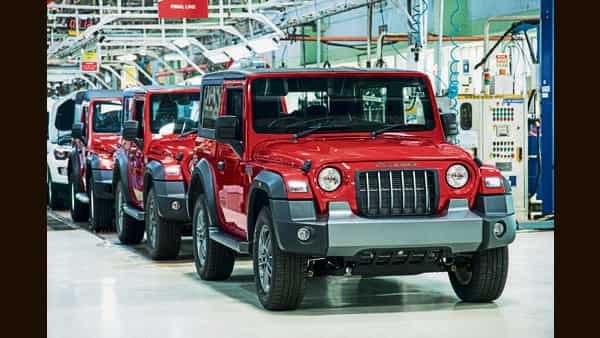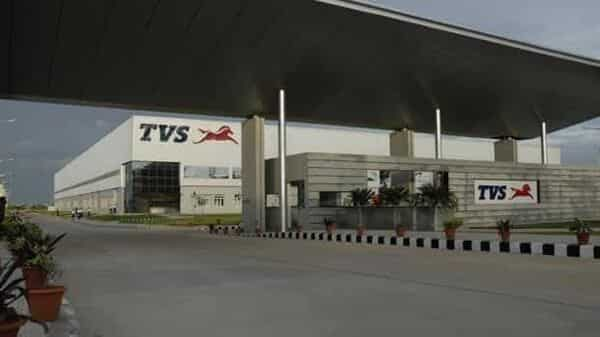[ad_1]
“How do you intend to arrest the slide in marketshare in SUVs and recover lost ground?” asked one shareholder.
“Is there any plan to get into the passenger car segment?” asked another.
Mahindra scoffed at the second question. “Why should we get into cars when people around the world are switching to SUVs?” he countered.
He didn’t have a convincing answer to the first question, though. “It has become like plastic….it is just expanding,” Mahindra rued. “The definition of SUV has become fluid…people are calling those cars SUVs which don’t have chassis….cars without a chassis is not really an SUV.”
He further added: “If you look at the old day SUV, which are ladder-frame SUV, I daresay our share has not gone down.”
SUVs are manufactured in two ways—‘ladder on frame’, where the body and chassis are built separately, and ‘monocoque’, where like small cars and sedans, it is all built as one unit.
M&M is a master of the first kind but most automakers, eager for a piece of the SUV action, innovated with the monocoque frame where the vehicles were lighter, more fuel efficient and drove like a car. Gone were the undulating ride quality and lack of refinement that SUVs were infamous for. As a result, new segments got created. As car-like SUVs became a rage, M&M came under attack from all sides.
M&M held a commanding 55.6% market share in the utility vehicle segment, which includes 7-seaters, in 2012. Back then, its burly SUVs dotted every nook and cranny of the country. Then, started a nine-year slump. The company was plagued by a dated product line-up with designs and features that were out of sync with shifting consumer preferences.
By 2018, it lost its leadership position to Maruti Suzuki India Ltd. Korean carmaker Kia Motors made its debut in 2019 and over time, shunted out M&M’s podium positions. Tata Motors Ltd would also join the party on the back of its compact SUV, Nexon, and micro SUV, Punch, to become the segment leader in 2022-23.
Between 2012 and 2018, M&M’s share less than halved. In the next three years, its share declined further, to under 15% in 2021.
“Those were a few tough years for us and a lot of people were critical of our performance. They were justified…our numbers were not flattering,” said Rajesh Jejurikar, executive director, auto & farm sectors, at M&M. “We had our task cut out and needed to bounce back.”
Since then, it has been quite a turnaround. From an all-time low market share of just 13.3% in September 2020 when it could manage to sell less than 15,000 vehicles, it has bounced back to 20% share (34,262 units) in September 2022. In the process, it pipped Tata Motors to once again become the largest SUV player in the country, a position it would hold again in October and miss out narrowly in November.
Following a string of successes—its last three launches, Thar, XUV7OO and Scorpio N, are all hits—it has an order backlog of over 260,000 units. That’s more than what it sold in 2021-22. This implies some customers would need to wait for well over a year to get their vehicles. It also lost flab by doing away with models like NuvoSport and rationalizing its lineup. For instance, TUV3OO has morphed into Bolero Neo.
Nevertheless, this year, Tata Motors would still command a comfortable lead over M&M.
The Thar’s drive
Let’s look at how M&M got its mojo back. The turnaround story started on the Independence Day of 2020. The country was still coming to terms with the pandemic and had just experienced the first round of lockdown. But M&M, boldly, unveiled a quirky two-door SUV that looked bigger than its four-metre length.
This was the new Thar, the most expensive small vehicle in the country with a starting price of ₹13.59 lakh. It wouldn’t enjoy the concessional GST that sub-four-metre cars get in India because of its large engine size and higher ground clearance. Only cars that have engines smaller than 1.2 litre for petrol and 1.5 litre for diesel and a ground clearance of less than 170mm qualify for lower GST.
Nevertheless, it would turn out to be M&M’s biggest success in close to a decade.
Bookings hit 9,000 in the first four days after the launch in October 2020. It would swell to 15,000 within a fortnight and 40,000 in the first three months. The momentum kept on building and by October 2021, Thar had bookings of over 75,000 units. Even today, Thar has pending orders of over 20,000 units that translates into a waiting period of over four months.
“You can accuse us of being under prepared but nobody could have anticipated this kind of response,” said Jejurikar. “We had initially planned a volume of 1,500 units per month for the Thar and not a very large proportion of that was hard top. But closer to the launch, we could see we would end up with volumes far higher. So, we triggered an expansion to 3,000 units a month.”
Indian consumers are not known for trying out new form factors and two door cars have never worked in the past. So much so, it has deterred Maruti from launching its two-door Jimny SUV in the country.
Against such odds, the success of the Thar is an outlier. Still underpinned by a ladder on frame chassis, the new version is more refined, comes with contemporary infotainment, connected features and has a petrol engine and automatic transmissions—two areas where M&M has traditionally been weak.
The impact of the Thar goes beyond just the numbers or the technology. Bulk of its sales come from first time M&M buyers, underlining how the brand’s perception has changed.
“It takes four-five years for a complete turnaround and that is what M&M has done—(they) upgraded engineering, introduced new platforms, a fresh design language and an overarching intent to move into higher gears,” said Avik Chattopadhyay, co-founder and partner of brand strategy firm Expereal. “The engine range of Mahindra is one of the best in class now. They have made significant progress on aspects of product engineering.”
This template worked in the other two launches as well—XUV7OO and Scorpio-N. In both cases, Mahindra has been able to re-energize hugely successful but stagnating brands.
The company is now investing ₹7,900 crore towards expanding capacity, from 29,000 units per month in the second quarter of 2022-23 to 49,000 units per month by March 2024.
Sibling rivalry
What about M&M’s growing rivalry with Tata Motors?
Founded within months of each other, in 1945, Tata Motors and M&M have, from time to time, crossed each other’s paths over the last two decades. While M&M’s SUV prowess was due to its genesis as a licensed importer and assembler of Ford’s Willys Jeep, Tata started out as a manufacturer of heavy trucks before gradually venturing into the ladder on frame utility vehicles. Later, in 1998, Tata forayed into passenger cars with the Indica.
In recent times, Tata has been particularly successful in the car-like SUVs that M&M doesn’t want to venture into. The success of the Nexon compact SUV, which is now the largest selling SUV in the country, and more recently, the Punch micro-SUV, with which it has opened up a new segment altogether, has been instrumental in the company becoming the utility vehicle leader. Tata is another turnaround story and the similarities in the journey of the two firms are hard to miss.
“It is a privilege to have strong competitors like Tata Motors. They keep reinventing themselves and that inspires us to do even better. Competition spurs innovation,” Anand Mahindra tweeted in July this year in response to a question by a user on how he viewed the rivalry.
In some ways, Tata has helped M&M. With its focus on car-like SUVs, the company has ceded the space in ladder on frame. Earlier, Tata had the Sumo against M&M’s Bolero and the erstwhile Safari against Scorpio. Now, M&M has been able to exploit the void.
“Both companies have gained but not at the cost of each other. They have found their strengths in different areas,” said auto industry veteran Arun Malhotra. “M&M has benefitted from its new found focus of sticking to what it does best rather than trying its hands at everything.”
Gaps, still
There are gaps M&M may want to plug. These include the micro-SUV segment and mid and full-sized people mover segments where Maruti’s Ertiga and Toyota’s Innova rule the roost. Further upwards, the premium SUV space is dominated by the Toyota Fortuner. That’s a space ripe for disruption after the exit of Ford’s Endeavour.
“We will look at all possibilities but we are clear we will not get into something where we don’t have a right to win…to create a me-too product with our rivals,” said Veejay Nakra, president of M&M’s automotive division.
Experts believe it will have to play in some of these segments to remain near, if not at the summit.
“M&M needs metro-centric SUVs in the sub- ₹7 lakh segment. It does not have anything on offer, so it will take time to overtake Tata in a sustained manner,” said Chattopadhyay of Expereal.
Electric future
The rivalry between the two firms is set to spillover into electric vehicles (EV), too. M&M can lay claim to being the first EV maker in the industry—it acquired Chetan Maini’s Reva Car Company in 2010 and launched its first vehicle back in 2016. Tata Motors, however, stole their thunder with the Nexon and Tigor EVs.
With the wind back in its sails, M&M is itching to reclaim that position as well. It will launch the XUV4OO, the electric version of its compact SUV XUV3OO, in January 2023. This will be followed by at least five more electric SUVs in the next five years.
“We would want to be leaders while making money in the EV business,” said Nakra. “We are not just going to chase numbers blindly but we want to be leaders in revenue market share.”
The investments are aligned to meet this ambition. It will sink in ₹10,000 crore over the next seven-eight years for EVs, which includes a standalone manufacturing plant in Pune. “Fortunately, all the investments needed for petrol or diesel powertrains for the next 10 years is done. So, we don’t need to worry,” said Velusamy R, president, Automotive Technology and Product Development, M&M.
It will certainly not be a cakewalk. Globally, companies have joined hands to share the cost of research and development for electric vehicles. M&M has also formed a partnership with Volkswagen but it doesn’t have a very good track record on collaborations—one enduring criticism of the company. But then, M&M can prove the pundits wrong. It already has once with the success of the two-door Thar.
Download The Mint News App to get Daily Market Updates & Live Business News.
[ad_2]
Source link
John Miller has been writing about science, gaming, and tech culture for over a decade. He’s a top-rated reviewer with extensive experience helping people find the best deals on tech and more.


